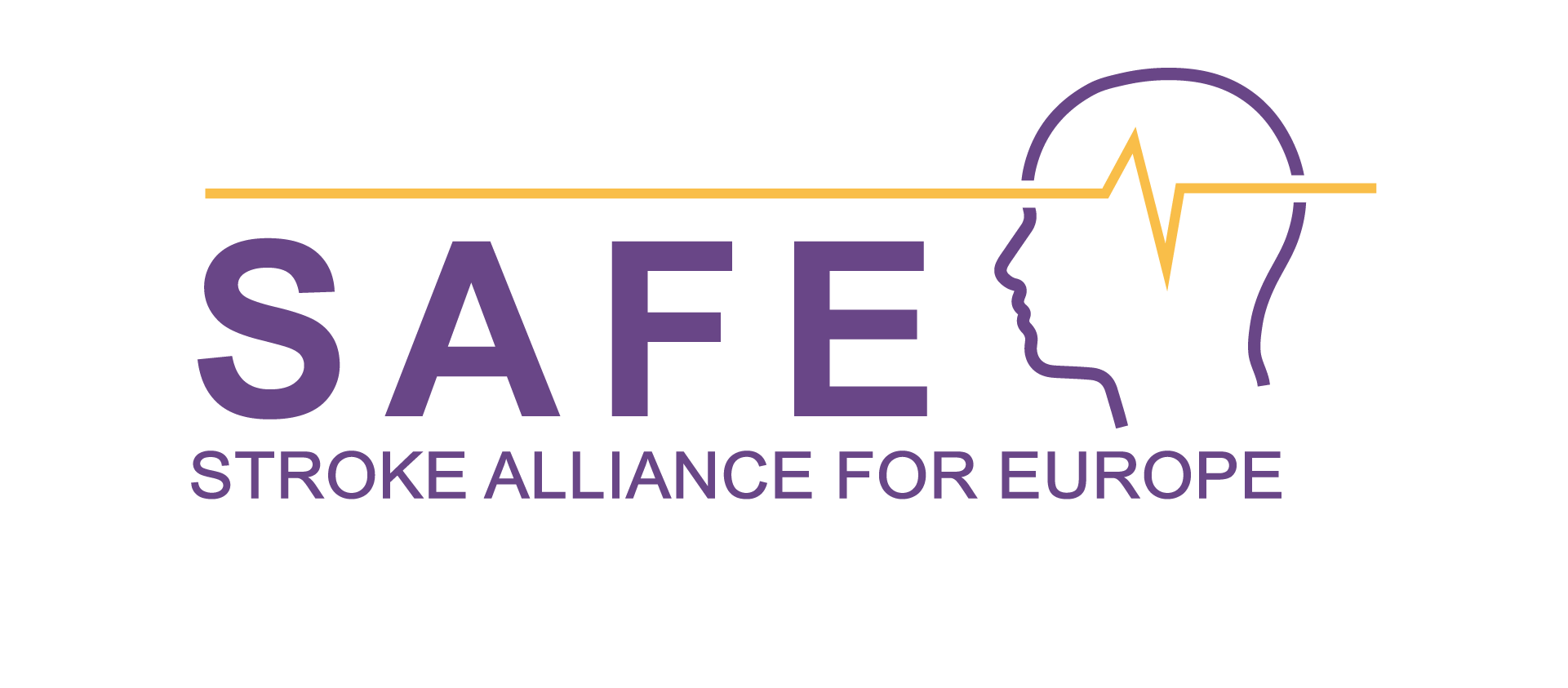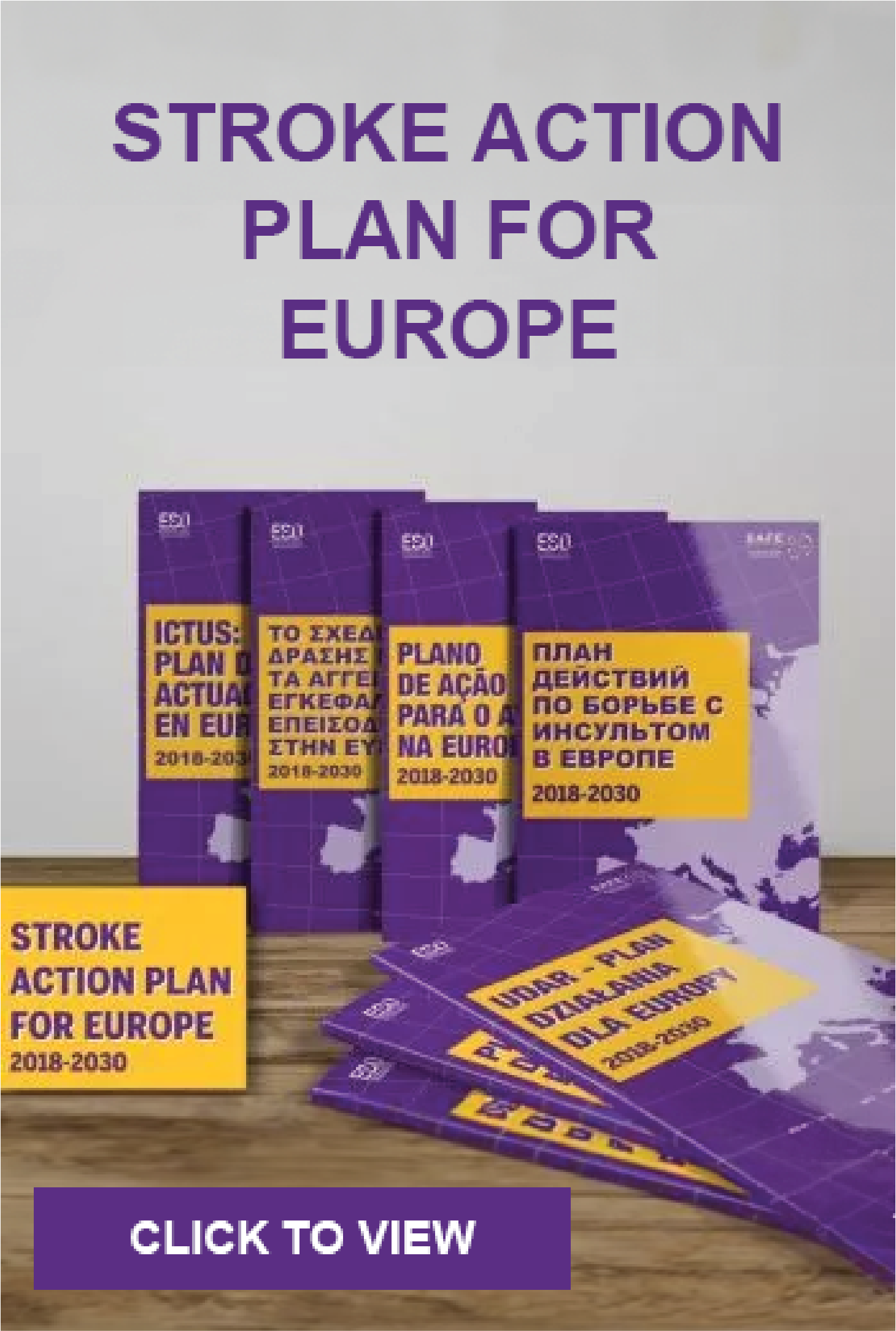The Stroke Action Plan for Europe 2018 – 2030
A challenge for policy makers and a framework for tackling the rising burden of stroke in Europe
Leaders of the European stroke community met today in Munich to develop the ESO / SAFE Stroke Action Plan for Europe 2018-2030, including leading academics, stroke survivors and caregivers, doctors, nurses, physiotherapists, occupational therapists and representatives from stroke organisations and the World Health Organisation. It creates an aspirational framework to drive healthcare policy, research priorities, local stroke management and patient-focussed care to meet the need demonstrated in the ESO / SAFE Burden of Stroke report, with €45 billion direct and indirect healthcare costs each year, a 34% increase in strokes by the year 2035 due to the ageing population, and huge variations in the level of stroke care available across Europe.
The new Action Plan builds upon the Helsingborg declarations of 1995 and 2006, that identified prioritized research areas and set targets for the future. Over the past year, >70 experts have met in working groups focussed on each area of the entire stroke care pathway, from primary prevention to acute stroke treatment through to prevention of recurrent stroke and long-term rehabilitation, and tackling for the first time the challenges stroke survivors and their families face in living a life after stroke. By recognising the best that we can do now, the reality of what is done in practice and what we can aspire to do by the end of the next decade, we have defined specific targets for where we should be in each area of stroke care and overall targets for 2030:
To reduce the absolute number of strokes in Europe by 10%
To treat 90% or more of all patients with stroke in Europe in a dedicated stroke unit as the first level of care
To have national plans for stroke encompassing the entire chain of care from primary prevention, through rehabilitation to life after stroke
Prof. Bo Norrving, Chair of the Stroke Action Plan for Europe steering committee, says
“Investing in stroke is a reinvestment in the health of the population and in the society. The time is here when we can substantially change the course of stroke thanks to advances that should become available all across Europe, as outlined in the action plan.”

Jon Barrick, President of SAFE, speaking at the Stroke Action Plan for Europe
Jon Barrick, President of the Stroke Alliance for Europe, says
“One of the aims of the Stroke Action Plan for Europe is to foster establishing National stroke action plans, which are not currently available in all European countries. Their development and implementation is, however, crucial for the future of stroke prevention, treatment and care, since every aspect of the whole stroke pathway matters equally. With an increasing ageing population and growing number of stroke survivors, it is vital for healthcare systems to better understand and address unmet needs of stroke survivors and improve their quality of life.”
Marion Walker, Professor of Stroke Rehabilitation, Nottingham, says
“The Stroke Action Plan for Europe has provided the opportunity for European experts and patients to speak with a unified voice, to enable all involved in caring for patients and patients themselves to identify what is needed to improve stroke care.”
The Stroke Action Plan for Europe presents a challenge to government, healthcare providers and stroke physicians across Europe as well as the framework to meet this challenge to tackle the rising burden of stroke and its repercussions over the next decade.

SAFE representatives at the Stroke Action Plan for Europe, Munich, Germany





